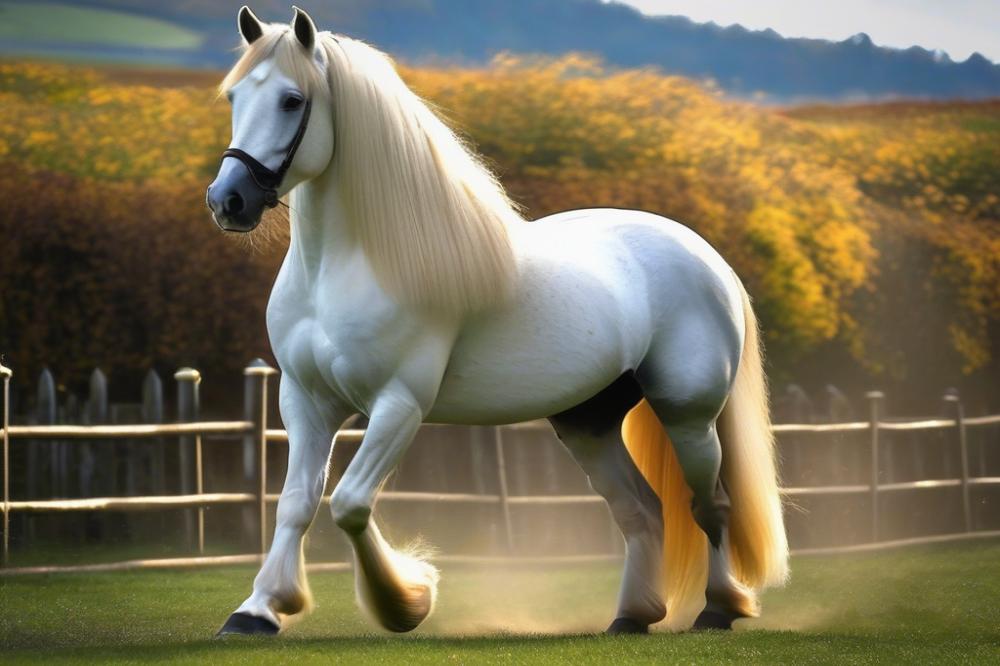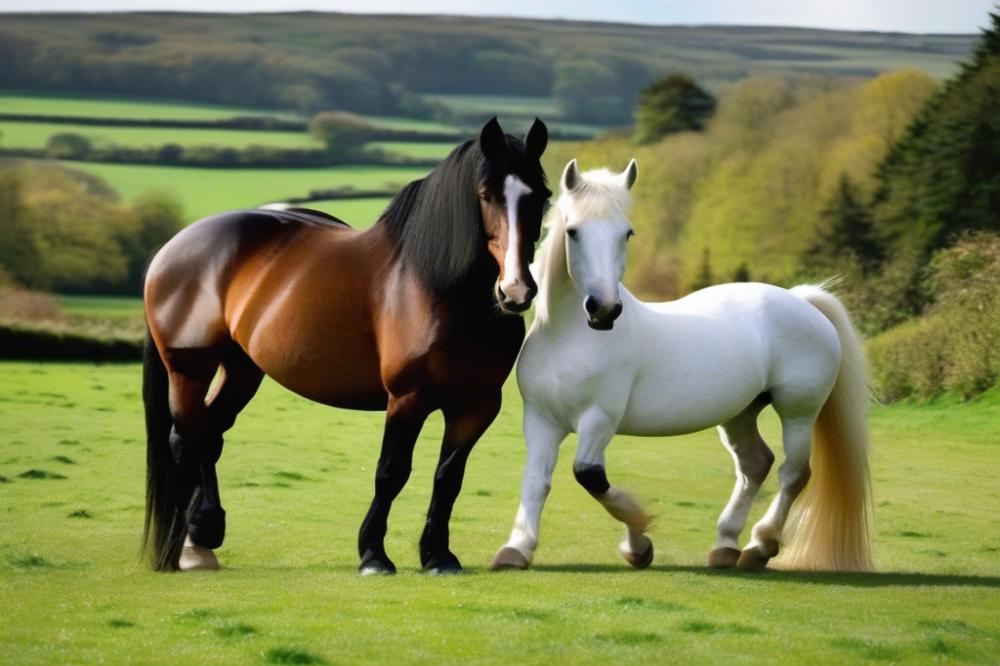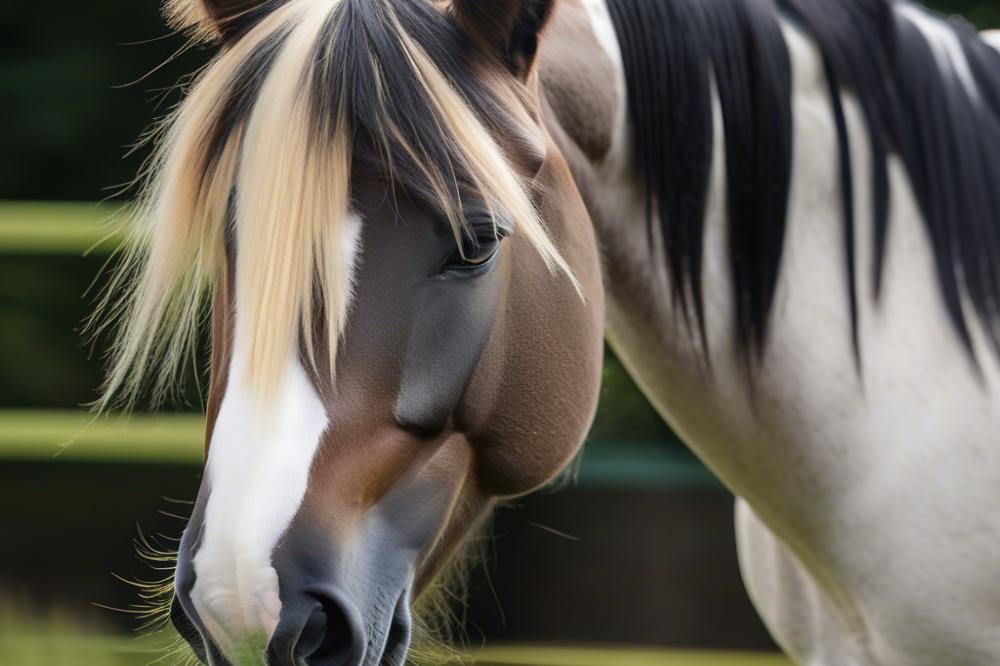Exploring the Irish Cob and Morgan Horse
When we think of horses, two breeds often come to mind: the Irish Cob and the Morgan Horse. Both of these magnificent creatures have rich histories and strong characteristics. The Irish Cob, a sturdy and beautiful breed, is known for its friendly demeanor and striking appearance. With their heavy feathering and imposing stature, they can captivate anyone at first sight. On the other hand, the Morgan Horse is a true American classic, with its smooth gaits and vibrant morgan colors that make it stand out from the pack. These horses are often seen in various activities, from farm work to dressage, proving their versatility.
This article aims to shed light on the intriguing combination of these two breeds. The idea of crossing an Irish Cob with a Morgan Horse raises curiosity about what offspring might inherit from each parent. As horse enthusiasts, understanding the outcomes of such pairings can be incredibly rewarding. Dive into the world of equine genetics, and discover how traits are passed down from one generation to the next!
The Significance of Understanding Horse Crosses
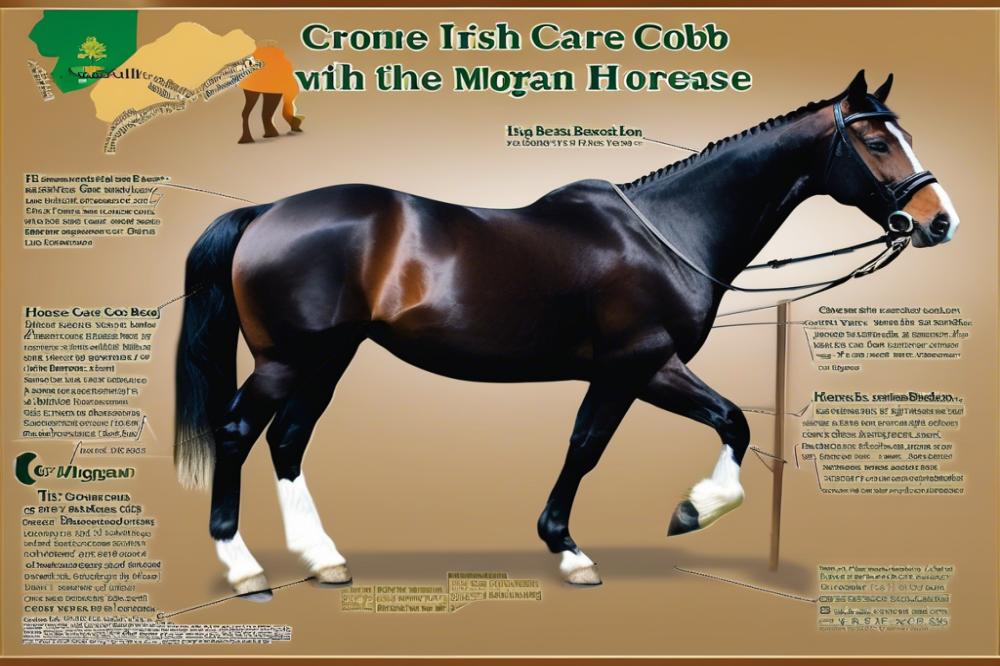
Horse breeding is no small task; it comes with a great deal of responsibility. Lots of factors can influence the characteristics of the foals produced. When we talk about crossbreeding, it is essential to recognize how traits can blend or clash, creating a variety of outcomes. By learning about these processes, horse owners can make informed decisions that benefit both the horses and their future riders.
Every horse carries a story within its genes, and understanding those stories can change the way we approach horse care and training. Whether you’re a seasoned rider or just starting, being mindful of what each breed contributes can make a world of difference. Plus, there’s something charming about the thought of a horse with the heart of a Morgan and the build of an Irish Cob, isn’t there? It’s like piecing together a jigsaw puzzle where every piece matters.
The world of horses is vast and filled with surprises. From breathtaking gallops to the gentle nuzzles of a mare and her foal, the bond between humans and horses runs deep. Knowing more about the Irish Cob and Morgan breed combination helps everyone appreciate the beauty of these animals even more. So, saddle up as we explore the fascinating realm of horse breeding and see what magic unfolds!
History of the Irish Cob
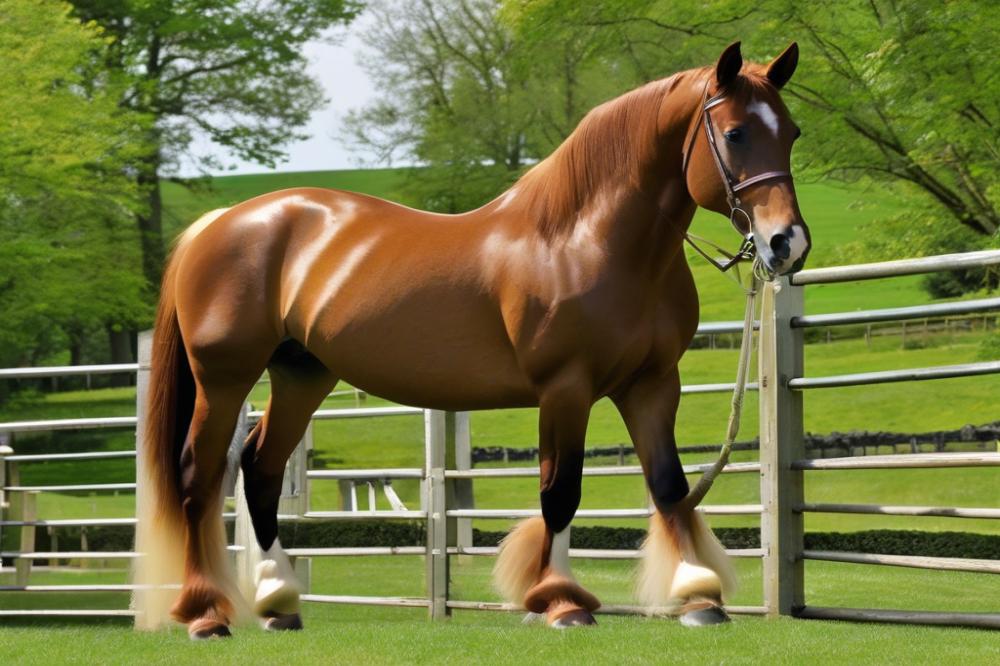
Origin and Development of the Irish Cob
The Irish Cob has a rich history that traces back many centuries. Traditionally, they were bred in Ireland for their strength and versatility. Originating as working horses on farms, these animals helped with heavy tasks. Their development comes from a mix of local draught horses and wandering ponies. This blend created a breed known for its resilience and hardworking nature. Stable owners and farmers valued the Irish Cob for its ability to excel in tough conditions. Over the years, the breed found a way into various equestrian circles, becoming popular in several disciplines.
Characteristics and Traits of the Irish Cob
When you first meet an Irish Cob, their appearance can be striking. They often feature a compact body, powerful legs, and an appealing, kind expression. This breed tends to have a thick mane and tail, along with plenty of feathering on their lower legs. Horses of this breed can stand around 14.2 to 15.3 hands high, making them a good size for many riders. Their temperament is typically friendly and willing, which makes training enjoyable. Many owners praise them for being calm and easygoing, traits that are essential for young and inexperienced riders. With good horse care, an Irish Cob can become a trusted companion for life.
Role of the Irish Cob in Various Equestrian Disciplines
Irish Cobs are not just pretty faces; they excel in a range of equestrian disciplines. These horses can be seen in everything from dressage to show jumping. Many riders appreciate their agility and willingness to learn. Some even compete in driving events, where their strength shines through. Their sturdy build is perfect for carrying a rider across trails or fields. In addition, they have been known to participate in Western riding and even hunting. Because of their versatility, these horses serve many roles in the equestrian world, making them a favorite among enthusiasts.
Crossbreeding has also become popular, combining the Irish Cob with other breeds like the Morgan Horse. This combination can enhance certain traits, thanks to the unique genetics involved. Overall, the Irish Cob holds a special place in the hearts of many equestrians. With their charming disposition and hardworking attitude, they bring joy to those who work with them.
History of the Morgan Horse
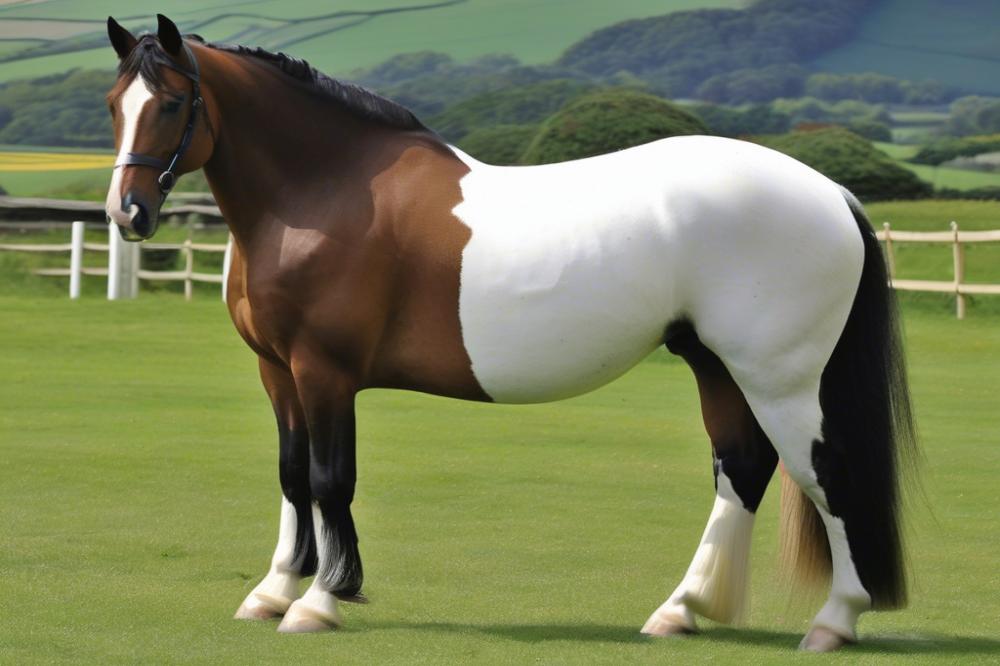
Origin and Development of the Morgan Horse
The Morgan horse has a fascinating backstory. This breed originated in the United States in the early 19th century. One horse named Figure, later known as Justin Morgan’s horse, became the founding father of the breed. Justin Morgan was a schoolteacher who owned Figure. The horse quickly showed off remarkable strength and speed. He caught the attention of many horse breeders in Vermont and surrounding areas. From there, the breed began to develop as people recognized its qualities.
Crossbreeding played a big role in shaping the Morgan. Breeders often mixed it with various horses, like Thoroughbreds and Quarter Horses. Such genetic diversity led to the development of a well-rounded animal. In the years that followed, these horses excelled in different disciplines like driving, riding, and working on farms. They were true multitaskers in the equine world!
Key Characteristics and Traits of the Morgan Horse
Morgans stand out for several reasons. They usually have a compact build, making them strong and agile. With their muscular bodies and long necks, they carry themselves with grace. Their coat color varies widely, showing off a palette that ranges from bay to black, and even chestnut. Some horses might surprise you with unique markings!
Personality-wise, Morgans are known for being friendly and willing. They often develop a close bond with their riders. Horse care can be easier in the hands of a Morgan owner, thanks to their calm nature. Many people find they learn quickly, making them just the right fit for both beginners and seasoned riders.
Significance of the Morgan Horse in American Equestrian Culture
Like the romanticized cowboy movies, Morgans hold a special place in American equestrian culture. They embody the spirit of hard work and versatility that defines many American horsemen. Over the years, these horses have been celebrated in various events. Trail riding, competition, and parades showcase their skills, bringing people together.
In addition to being reliable, Morgans have helped shape the world of equine breeding. Other breeds have benefited from their genetics. Their influence ripples through the history of American horse breeding. Often seen in family barns, they’re a beloved part of many lives. The bond between horse and owner brings joy to farmyards and stables alike.
The Morgan horse continues to inspire those who appreciate the beauty of equine life. Whether you’re an aspiring horse enthusiast or a seasoned pro, there’s something truly special about these magnificent creatures.
Benefits of the Irish Cob and Morgan Cross
Physical Attributes and Advantages
Crossbreeding often produces remarkable physical qualities. An Irish Cob and Morgan cross can inherit the best features from both breeds. Typically, you might notice a stunning combination of strength and elegance. Irish Cobs are well-known for their sturdy build. Morgans also bring a lightweight frame with a powerful motor. This mix often results in a horse that is both robust and agile. A horse with this lineage might also have an expressive face and flowing mane. People often stop to admire them. Their versatile bodies allow for a variety of activities. You can expect a horse that is built for endurance with some flashy movements.
Temperament and Behavior Traits
When it comes to personality, this cross offers a wonderful blend. Generally, Morgans are known for their friendly nature. They often form strong bonds with their humans. Irish Cobs tend to be gentle and sensible. So, it’s no wonder that their offspring often exhibit these fantastic traits. A horse with this background usually enjoys a calm demeanor. They can easily adapt to new situations. That means a cross like this can also handle different riders well. This makes them suitable even for young or novice equestrians. Their willingness to learn can be quite impressive. Owners often describe them as eager to please. If the barn was a social club, this cross would be the popular member.
Versatility in Various Riding Disciplines
Riders love a horse that can do it all. Thankfully, a cross between these two breeds offers just that. Whether it’s dressage, trail riding, or show jumping, they often excel. They have the stamina and grace for long rides. Those who enjoy engaging in different equestrian activities find this cross incredibly useful. Additionally, their unique characteristics can stand out in competitions. Many riders appreciate a horse that comfortably transitions from one discipline to another. It’s like having your cake and eating it too! As they tackle various challenges, their adaptability truly shines. Commodities like these are invaluable in equine breeding today.
Breeding considerations for the Irish Cob and Morgan cross
Selecting breeding pairs
Breeding pairs should be chosen with great care. The Irish Cob is known for its hardy build and gentle temperament. On the other hand, the Morgan horse brings a spirited attitude and grace to the mix. Consider how these traits can complement each other. Think about each horse’s individual strengths and weaknesses. When selecting, look beyond looks. Personality and behavior play huge roles. A calm Irish Cob paired with an energetic Morgan can create an interesting blend.
Compatibility is key. Observing how both horses interact can give you clues. Are they friendly? Do they work well together? A harmonious pair will likely produce healthier offspring. When both parent breeds are well-matched, the results can delight and surprise owners down the line.
Health considerations and genetic diversity
Maintaining strong health traits is critical. Proper equine genetics helps prevent genetic disorders commonly found in horse breeds. Always check the health backgrounds of both horses. You never want to crossbreed without understanding potential issues that might arise.
Genetic diversity is another important factor to ponder. Crossbreeding can introduce new traits and vigor, often referred to as heterosis. This can lead to offspring that are not only healthier but also perform better. But remember, too much diversity might also lead to unpredictability in characteristics. Balancing these aspects can be tricky but rewarding.
A good checklist for health includes common genetic diseases, like hereditary equine Regional dermal Asthenia (HERDA) in Morgans or equine polysaccharide storage myopathy (EPSM) in Irish Cobs. Conducting health tests is smart. Knowledge empowers breeders, guiding them to make better choices.
Planning for a successful breeding program
Creating a breeding program is like plotting a course for a thrilling adventure. It takes careful planning and patience. You’ll need to map out your goals. Are you breeding for looks, temperament, or performance? Defining what you want helps narrow down decisions.
Nurturing the young ones requires a solid horse care plan. Good nutrition, training, and socialization lead to well-rounded horses. A balanced diet keeps their bodies in top shape, while positive experiences during training foster good behavior.
Lastly, always remain flexible. Breeding horses doesn’t come with a guarantee. Embrace surprises and be ready to adjust your plans. Each foal can surprise you, offering traits you didn’t expect. So, buckle up for the ride! Every day brings new challenges and rewards in the world of equine breeding.
Training and Care for the Irish Cob and Morgan Cross
Basic Training Methods and Techniques
Training this special cross requires a mix of patience and consistency. A clear routine works wonders. Start with basic groundwork to build trust and respect. Horses don’t always understand what you want right away. Show them through gentle guidance. Use rewards, like treats or scratches, to reinforce good behavior.
Focusing on positive reinforcement makes training more enjoyable for both of you. Avoid harsh training methods; they may only lead to confusion or fear. Remember, these horses are smart. They can pick up on cues if you are calm and clear. Gradually introduce saddle and bridle work once they are comfortable. This is key in horse care.
Socialize your young horse as much as possible. Meeting new people and other horses helps develop confidence. A confident horse is often a great partner. Take them on various trails or to events. Exposure to different environments aids in their adaptation.
Diet and Nutritional Requirements
Every horse needs a balanced diet, and this cross is no exception. Feeding high-quality hay is a must; it provides essential fiber. Grains can be included but should always be in moderation. Too much grain can often lead to digestive problems.
Fresh water needs to be readily available every day. Hydration is just as important as food. If your horse works hard, additional protein might be necessary to help muscle recovery. Consult with a vet or an equine nutritionist to create the right diet plan.
Keep an eye on their weight. Overweight horses can face health issues. Use a weight tape if you’re unsure. Adjust feeds according to their weight and activity levels. Healthy horses are happy horses.
Common Health Issues and Preventive Care
Like any breed, this cross can face health issues. Regular check-ups with a veterinarian help catch problems early. Laminitis and joint issues are among the most common concerns. Maintaining a healthy diet and balanced weight is critical for prevention.
Hoof care cannot be overlooked. Routine farrier visits keep hooves healthy. Trim and shoe as necessary to avoid complications. These horses tend to have solid feet, but neglecting them can lead to pain.
Vaccinations are essential too. It’s important to keep up to date with them. They help prevent disease in your horse as well as others in the barn. Consult with your vet regarding the best vaccination schedule.
Lastly, dental care is frequently forgotten. Scheduling dental exams keeps their teeth sharp and healthy. A horse with dental pain won’t be very happy, or even rideable. Regular brushing and dental checks help keep them cheerful and in good shape.
Real-life Experiences and Testimonials
Stories from Owners of Irish Cob and Morgan Crosses
Many folks who own a crossbreed of an Irish Cob and a Morgan have shared their stories. One owner, Jessie, beams when she talks about her mare, Bella. Bella is a perfect blend of strength and grace. “She’s got the endurance of an Irish Cob and the smoothness of a Morgan,” Jessie explains. They often hit the trails together, enjoying the beautiful countryside.
Another owner, Tim, shared his journey with his gelding, Max. Max has an adventurous spirit. Tim chuckles as he recalls how Max once tried to climb a small hill like a mountain goat. “I swear he thinks he’s invincible!” Tim said. Owners often appreciate the playful nature of these horses. Their personalities shine brightly with every ride.
Successes in Competitions and Recreational Riding
Competitions can be thrilling. Many riders have seen successes in local shows and community events. For example, Sarah entered her horse, Lucky, in a dressage competition. “He performed like a true champion!” she said. Crossbreeding results often show a balance between agility and strength. This mixture can help riders excel in various disciplines.
Equine breeding enthusiasts note that these horses do well in recreational riding, too. The horses adapt nicely to different activities—from trail rides to jumping courses. “We take it all on,” says Luke, who enjoys riding through the woods with his horse, Charlie. Riding a crossbreed opens doors to many enjoyable experiences for riders of all levels.
Challenges Faced and Solutions Found
Of course, not every story is without its trials. Horse care can sometimes be tricky. Some owners encountered difficulties with certain traits. For instance, the coat of the cross can vary in length and thickness. “It took me a while to find the right grooming products,” noted Maria, who has a flashy gelding named Finn. The solution was simply to experiment with different brushes and shampoos until she found what worked best.
Training also poses its own set of challenges. Some owners found that their horses might inherit stubbornness from their Irish Cob ancestors. “Patience is key,” said Tom, who experienced this firsthand with his horse, Duke. He learned that clear communication and a gentle touch were essential during training. “Sometimes, a little humor goes a long way in calming them down,” he added, laughing at the antics of his spirited steed.
Community support can be a lifesaver. Many owners connect through social media or local clubs. They share tips on equine genetics and crossbreeding best practices. Often, a quick chat can help solve a problem that seemed overwhelming. “We’re all in this together,” said Rachel, who enjoys swapping stories on her weekly rides with friends. They understand the ups and downs of horse ownership. A good support network makes the journey more enjoyable.
It’s evident that the stories surrounding these wonderful horses are as diverse as the horses themselves. Each owner has their unique adventures, challenges, and successes. That’s what makes riding so rewarding. After all, life with horses is full of surprises.
Future trends in breeding Irish Cob and Morgan crosses
Emerging popularity and market demand
With the rising interest in crossbreeding, the Irish Cob and Morgan cross is gaining attention. More riders are looking for versatile horses that can perform in different disciplines. This trend in equine breeding shows a clear demand for adaptability in horses. People value traits such as temperament and athleticism, which these crosses tend to embody. Buyers are eager to find these horses, often searching high and low at breeders’ farms. An increase in social media also helps spread the word about these unique combinations. More horse lovers are now aware of the characteristics they can get through this cross.
Impact of breeding trends on equestrian communities
As market demand grows, it changes the landscape for equestrian communities. Breeders are adjusting their practices to meet this interest. They’re becoming more familiar with equine genetics and how to optimize these traits. A more informed approach can only benefit our beloved horses. Training programs may also evolve, adjusting to the styles of these new hybrids. Clubs are likely to host more events showcasing them, igniting excitement among participants and spectators. This level of involvement might draw in new horse enthusiasts, who see opportunities to bond with these horses through various activities.
Potential for new developments in breed characteristics
Crossbreeding can lead to unexpected surprises in characteristics. Breeders who work with the Irish Cob often notice their strong builds and gentle natures. When mixed with the Morgan, there’s a chance for improved agility and stamina. This potential creates an interesting mix that could suit many riders. Some crosses may display a charming blend of the best traits from both breeds. Innovations in horse care and breeding practices further contribute to refining these wonderful hybrids. Observing traits in these animals can encourage breeders to experiment even more. It’s like cooking; even a pinch of an unexpected ingredient can lead to delightful results!
In this ever-evolving world of horse breeding, possibilities abound. Keeping an eye on emerging trends might lead to amazing developments that captivate the hearts of equestrian enthusiasts everywhere.
Wrapping It All Up: The Charm of the Irish Cob and Morgan Cross
Let’s sum it all up: the blend of Irish Cob and Morgan horsepower is something special. Each breed brings its own fascinating features to the table. The Irish Cob is known for its sturdy build and engaging personality. On the other hand, the Morgan horse is celebrated for its versatility and agility. Together, they create a combination that is as delightful as a sunny day in the countryside.
For those thinking about owning one of these crossbreeds, consider what you’ll gain. A horse that stands around 14.2 to 16.2 hands in height, following common horse hand measurement practices, will likely be a strong companion. This hybrid is fantastic for various activities, whether you envision leisurely rides or hard work in the fields. Not only do these horses work well as trusted companions in your everyday life, but they can also shine in various disciplines. Breeders and owners alike can find joy in the unique qualities that each offspring can hold.
Imagine leading a horse that is both powerful and gentle, one that can transport you on adventures or boast a calm disposition while tending to chores. There’s nothing quite like bonding with an animal that understands your spirit. Horses have a way of connecting with us, making the experience meaningful. So, why not embark on this journey together?
In closing, crossing the Irish Cob with a Morgan horse is not just about breeding. It’s about embracing the journey, the growth, and the joy these exceptional animals can bring into your life. If you happen to be a potential owner or breeder, never underestimate the charm of this cross. Each unique horse that emerges can carry a story – be it a tale of quiet mornings or daring trails.
In the great tapestry of equestrian companions, this cross could become a treasured thread. With a dash of care and understanding, the Irish Cob and Morgan mix can flourish into something extraordinary. So go ahead, explore this route! Your next great adventure may be waiting right behind a barn door.

